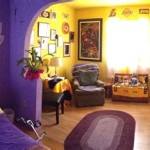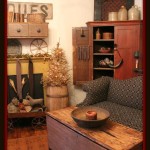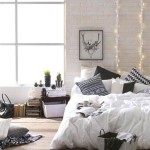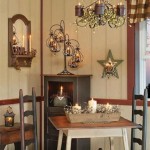How To Decorate A Living Room Dining Room Combo
Combining a living room and dining room into a single space presents unique decorating challenges. Successfully integrating these two distinct functional areas requires careful planning and execution. This article offers guidance on how to create a cohesive and stylish living room dining room combo.
Defining Separate Zones
The first step in decorating a combined living and dining space is to visually delineate the two areas. This can be achieved through several methods. Area rugs are a highly effective tool. Placing a rug under the dining table anchors the space and distinguishes it from the living area. Similarly, a different rug in the living room further emphasizes the separation. Choosing rugs with complementary colors or patterns, yet distinct textures, can create a harmonious yet differentiated aesthetic.
Furniture placement also contributes to defining zones. Positioning the sofa with its back to the dining area creates a natural barrier. Alternatively, a console table placed behind the sofa can serve the same purpose while offering additional surface space. Strategically placed bookshelves or tall plants can also create a visual divide without completely closing off either area.
Creating a Cohesive Look
While distinct zones are important, maintaining a cohesive look throughout the combined space is crucial. This can be achieved through a consistent color palette. Using a similar color scheme for both areas ties the spaces together, even with differing furniture styles. For example, incorporating accent pillows in the living room that match the dining chairs creates a subtle link between the two zones.
Carrying a consistent style throughout both areas also contributes to a cohesive aesthetic. If the living room features a modern design, the dining area should complement this style, even if it's not an exact match. Mixing and matching styles is possible, but it requires a careful eye for detail and balance to avoid a disjointed look. For instance, a rustic farmhouse living room can be paired with a slightly more modern farmhouse dining set, maintaining a shared aesthetic while allowing subtle variations.
Lighting plays a vital role in unifying the space. Using similar light fixtures or lamps with coordinating finishes throughout the combined area creates visual harmony. A statement chandelier over the dining table, complemented by similarly styled table lamps in the living room, can tie the two spaces together effectively.
Maximizing Space and Functionality
In a combined living room dining room, maximizing space and functionality are paramount. Multi-functional furniture is particularly beneficial. A storage ottoman in the living room can serve as extra seating and provide hidden storage. Similarly, a dining table with a leaf insert allows for flexibility, expanding to accommodate larger gatherings while remaining compact for everyday use.
Vertical space should also be utilized. Tall bookshelves or wall-mounted cabinets offer storage solutions without encroaching on valuable floor space. Incorporating mirrors strategically can create an illusion of spaciousness, reflecting light and visually expanding the room. Positioning a large mirror opposite a window can significantly enhance this effect.
Choosing Furniture and Decor
Selecting furniture and decor that complements both the living and dining areas is essential. Scale and proportion are key considerations. Choosing furniture that is appropriately sized for the space prevents overcrowding and ensures comfortable traffic flow. Avoid overly large or bulky pieces, especially in smaller combined spaces. Opt for furniture that is both stylish and functional.
Decorative elements should enhance the overall aesthetic and create a welcoming atmosphere. Artwork, throw pillows, and decorative accents can add personality and warmth to the space. Consider incorporating natural elements, such as plants or flowers, to bring life and vibrancy into the combined area. The use of textures can add depth and visual interest, from textured throw blankets in the living room to woven placemats in the dining area.
Emphasis on Flow and Functionality
Maintaining a natural flow between the living and dining areas is crucial for a successful combined space. Furniture arrangement should facilitate easy movement between the two zones. Avoid blocking pathways or creating tight spaces that impede traffic flow. The space should feel open and inviting, encouraging interaction and conversation.
Consider the primary function of each area. If the living room is primarily used for relaxation and entertainment, ensure comfortable seating arrangements and convenient access to entertainment systems. If the dining area is frequently used for hosting meals, prioritize a comfortable dining set and adequate lighting. Addressing the specific functional needs of each area enhances the overall usability of the combined space.
Considering Traffic Flow
Careful planning of traffic flow is essential in a living room dining room combo. Ensure ample space for movement between the two areas and to other parts of the house. Furniture placement should facilitate easy navigation without creating bottlenecks. Leave enough space around the dining table for chairs to be pulled out comfortably without obstructing pathways.

5 Tips For Decorating A Combined Living Dining Room Happily Ever After Etc

30 Living Room Dining Combo Ideas 2025 One For All Rectangle Rectangular Rooms

Living Room And Dining Design Ideas Designcafe

Living And Dining Room Combo With 5 Ilrated Floor Plans Roomlay

Living Room Dining Combo Ideas With Tricks Doğtaş

Living Room Dining Combo Ideas With Tricks Doğtaş

5 Tips For Decorating A Combined Living Dining Room Happily Ever After Etc

Living Room And Dining Design Ideas Designcafe

48 Modern Dining Room Design Ideas That You Were Looking For Matchness Com Living Combo

Get The Ideal Rectangle Living Room Dining Combo Now







